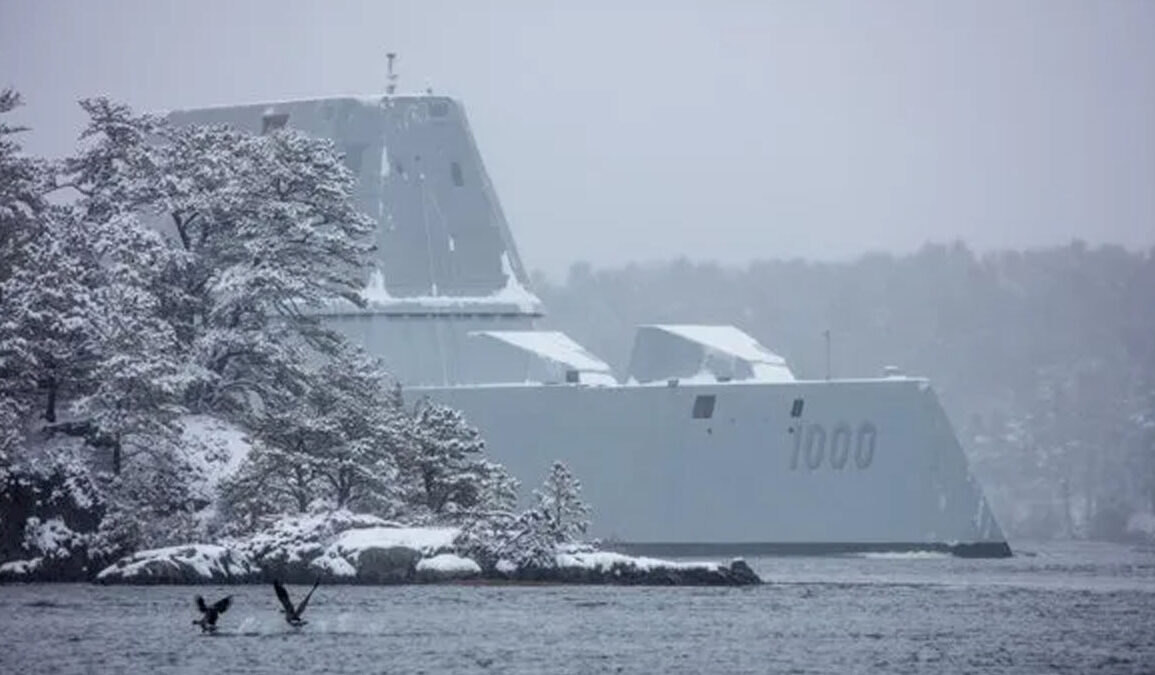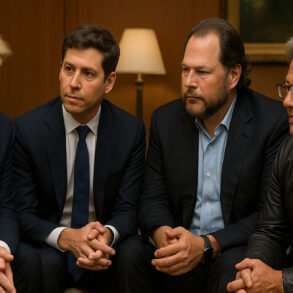President Donald Trump is asking the Navy to design a new generation of warships people are calling the “Golden Fleet.” He has spoken multiple times with Navy leaders and signaled that he wants a whole new fleet focused on range, firepower, and survivability against China and other rivals. At a recent gathering of top commanders, he even mused about a modern concept of the battleship, saying that some call it old technology, but the big guns and long reach are still attractive ideas. The White House says he has prioritized maritime strength, pointing to a new Office of Shipbuilding, funding wins, and a deal with Finland to build 11 arctic cutters.
Improved Specifications and Special Abilities
The plan would mix very large ships with small, agile vessels and unmanned systems. Officials are exploring a heavily armored surface combatant in the 15,000 to 20,000 ton range. It would carry powerful long-range missiles, possibly including hypersonic weapons, and pack more firepower than today’s destroyers and cruisers. The broader fleet would also add corvettes and other small ships to spread risk and operate in contested waters. Unmanned vessels at sea and in the air would act as hedge forces, filling gaps during crises.
Early concepts focus on longer reach, higher volume of fire, and tougher protection. Designers are weighing advanced sensors and hardening, with the core emphasis on launching a larger number of long-range missiles that can break through dense air defenses. Retired Navy officer Bryan Clark summed it up clearly, saying the battleship of tomorrow is the ship that carries really long-range missiles. In parallel, Navy planners are testing manned and unmanned teaming ideas that would support tactics like flooding key chokepoints with drones to slow an invasion and buy time.
Missiles, Corvettes, and Unmanned Teams
The Navy today counts 287 ships, including carriers, destroyers, cruisers, amphibs, and submarines. Under the this approach, the target shifts from a fixed top line to a mix built around roughly 280 to 300 crewed ships backed by many robotic vessels. The Navy’s analysis points to a barbell-shaped surface force, with very large ships at one end and smaller ships like corvettes at the other. As this evolves, older designs, including many Arleigh Burke destroyers, would retire over time.
Missile range is the central design driver. The large combatant would host bigger launch cells and potentially hypersonic weapons. Smaller ships would bring modular mission packages, quicker build times, and forward presence in tight waters. Unmanned platforms would saturate threat zones, scout ahead, and add extra shooters. Commanders in the Pacific have floated a Hellscape concept that surges thousands of unmanned craft into the Taiwan Strait if needed.
Supporters argue that Trump is treating the threat seriously and aligning with the Navy’s own wargame insights. They see a chance to reset the surface fleet for modern combat, where long-range missiles and distributed operations decide outcomes. They also note the president’s personal involvement and urgency. The White House highlights actions to bolster shipbuilding and icebreaking capacity, and aides say more announcements could be coming.
Skeptics question the focus on very large ships in a fast-changing threat environment. They warn that super-sized combatants could be slow and expensive to design and build. Some urge the administration to fix shipyards and clear maintenance backlogs first, arguing that new hulls alone will not solve readiness problems. Others note that a brand-new large ship might take a decade to appear, which could push first deliveries well beyond the current term. This is why some analysts favor smaller ships, foreign co-production of corvettes, and faster moves on unmanned systems.
Industry and Timeline Realities
Turning a 15,000 to 20,000 ton concept into steel will challenge shipyards and the supply chain. The Navy is already stretched by major submarine and carrier programs. Experts caution that the design phase alone could take years, followed by a long build. By contrast, modest corvettes could be adapted and produced more quickly, potentially with allied partners, to show progress while the big ship matures.
China has more ships by count and is modernizing fast. U.S. planners say the answer is not only hull numbers, it is the ability to strike first from longer range, absorb punishment, and keep fighting. The Navy aims to do that with a tough flagship, a swarm of smaller ships, and a web of unmanned systems. Even critics of the largest ship ideas agree that longer-range missiles and a healthier industrial base are essential. From this perspective, it is good that the administration is elevating the Navy and pressing for a fleet built to win in the Pacific.
The “Golden Fleet” is still in early discussion, yet it sets a clear direction. Bigger punch at longer range, more distributed platforms, and a stronger backbone of maintenance and shipbuilding. Supporters see a necessary reset to match a serious rival. Detractors see risk in cost, time, and emphasis on very large ships. Both sides agree on one thing. The Navy must modernize with urgency, and sustained investment will determine whether this idea becomes a fleet that deters war and if needed can fight and win.








